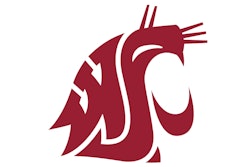Copyright 2018 Orange County Register
All Rights Reserved
Orange County Register (California)
INGLEWOOD — Amid steel beams and concrete columns and towering cranes, spread over 300 acres of Inglewood landscape, the grand vision of Los Angeles as the capital of the football world is beginning to take shape, and Rams president Kevin Demoff is standing at the center of it all, near what will someday be the 50-yard-line of the NFL's most state-of-the-art venue, marveling at the progress that has been made. "Truly now, you can look up and say this looks like a football stadium," Demoff says.
Two seasons remain until the Rams and Chargers will actually move in, but the construction of L.A.'s new football utopia is now over 50 percent finished. Risers for bleacher seats have been set. Some luxury boxes have been built. The unique roof canopy that will encircle the stadium is now being constructed. The progress here is plain to see.
"You can really picture what it will actually be like, being here on a Sunday," Chargers president of football operations John Spanos says.
There will be plenty of Sundays before that vision becomes a reality, but this week, as the Rams and Chargers meet for the first time since both moved to Los Angeles — and the last time before both move to the new stadium — L.A.'s two NFL teams stand at a crucial juncture in the construction of their respective franchises on the field. At 2-0, the Rams appear to belong among the league's elite, but are walking a tightrope in terms of roster construction. The Chargers have more than enough promise to make the playoffs, but still need to put their snakebitten ways behind them. The progress both have made, while not as quantifiable as stadium construction, is just as obvious to anyone who has been paying attention.
At the very least, they're building toward something. For decades, Los Angeles was the land the NFL had forgotten, long haunted by the spectre of failed stadium plans. The city was used and abused as leverage for franchises seeking a new stadium in their own locales. When both the Rams and Chargers finally did move here, they were either ridiculed or ignored, and in some cases, both.
But as building of their shared stadium progresses, as the physical vision of their shared dream comes into view, it's becoming far easier to imagine a world in which both the Rams and Chargers stand atop the league together when their Inglewood NFL wonderland opens in the summer of 2020.
By then, the Rams may very well have won a Super Bowl. They made it abundantly clear last offseason that they planned to swing for the fences this season. Through two weeks, Sean McVay and Co. have looked like the juggernaut their roster suggested.
But more than that, they appear to be a juggernaut built to last. General Manager Les Snead took special care to protect that future this offseason, locking up Todd Gurley, Aaron Donald, Brandin Cooks, and Rob Havenstein through at least 2021. Marcus Peters and Lamarcus Joyner could sign long-term deals in the near future. And with that nucleus intact, there's no reason to think that the Rams won't remain among the league's elite far beyond the stadium's opening.
"We always felt if we could do our job correctly, with the stadium and the team, we'd be able to captivate," Demoff said. "I think we're just scratching the surface of what we can become."
The only question in that unquestionably bright future is how starkly things might change when the Rams find themselves paying what's likely to be one of the largest contracts in league history for Jared Goff. Right now, they're in the fortunate position of paying their young quarterback just $7.6 million in 2018, leaving salary cap room for the likes of Aqib Talib ($11 million) and Ndamukong Suh ($14 million). Assuming Goff continues his ascension as a quarterback, that price will surely near $30 million, just as the Rams prepare for their first season in the new stadium.
Philip Rivers' contract, meanwhile, expires just before that 2020 season. He'll turn 38, the December before it opens, and in an interview with Sports Illustrated earlier this offseason, he expressed uncertainty about whether he'd last into his 40's. (Though, Rivers did say he'd "like to get in that new stadium.")
The decision on his future is crucial to the direction of the franchise he's quarterbacked so faithfully over the past 12 seasons, but elsewhere, the Chargers have a growing fleet of young weapons and a handful of Pro Bowl players under entirely reasonable contracts. They will need to decide whether to do long-term deals with Joey Bosa (probably) and Melvin Gordon (probably not), but otherwise, the Chargers, like the Rams, are built to last. Assuming, of course, they aren't left without a quarterback just as the rest of their roster is clicking.
For now, the construction of that shared vision for L.A. football is continuing as scheduled. Both teams have been built with an eye towards 2020, with most of their major stars locked up through then. Their respective championship windows should be open when the stadium's doors open to the public.
Then, with its state-of-the-art stadium constructed and Super Bowl-caliber rosters intact, Los Angeles, the city once left behind by the NFL, could very well stand atop it, with designs on dominating football's foreseeable future.
@Ryan_Kartje on Twitter
Read More of Today's AB Headlines
Subscribe to Our Daily E-Newsletter
Terms and Conditions Privacy Policy



































